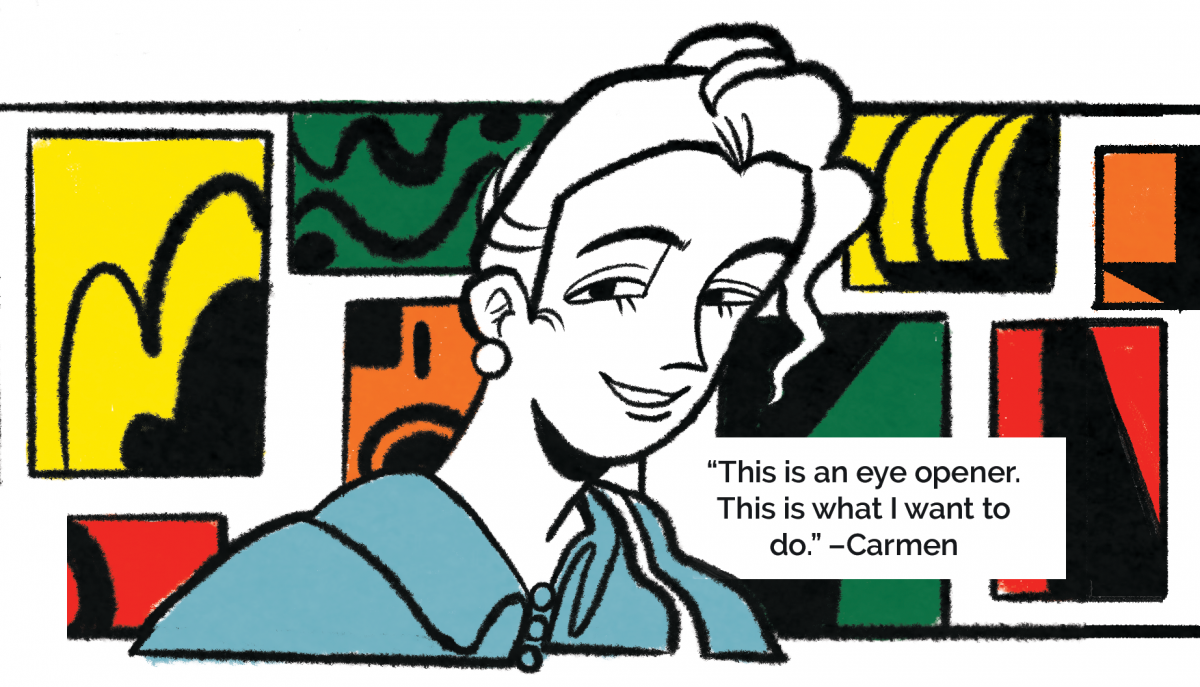Carmen Herrera (1915-2022) was a groundbreaking artist whose hard-edged abstractions were unparalleled at the time of their conception in the late 1940s. However, Herrera’s artwork only gained the attention it rightfully deserved when she turned ninety-three. Her first major solo show in New York City occurred when Herrera was nearly 101 years old. With Herrera’s recent death on February 12, 2022 in her home and studio in New York, we remember her remarkable life and work.
Herrera was born in Havana, Cuba where she studied architecture. When she immigrated to New York City in her 20s, she shifted her focus to painting. Herrera moved to Paris in 1948, where she developed an entirely abstracted, minimalist style of work that resulted in crisp, geometric canvases that defined her style going forward. Even though Herrera felt excluded from the commercial art scene during her five-year sojourn in Paris, she interacted with fellow American artists Barnett Newman and Leon Polk Smith, who were also creating geometric works. In Blanco y Verde, Herrera constructed a series of pressure points where green triangles meet the edge of the canvases. The result is a dynamic work that invites viewers to decipher the shifting relationships between color and form.
In this video from SAAM’s 2013 exhibition, Our America: The Latino Presence in American Art, former curator E. Carmen Ramos looks at Herrera’s diptych painting, Blanco y Verde. Ramos notes, “She developed a wide body of work, that was highly experimental and motivated by her interest in form, space and color. Many of her works, including Blanco y Verde, started out as sketches mapped out on paper mathematically in which she played with different forms and space.”
Carmen Herrera is one of ten artists we chose to include in SAAM’s recent comic series, Drawn to Art: Ten Tales of Inspiring Women Artists. Herrera’s artistic life was marked by the challenges of being a woman artist at a time when the art world was dominated by men. In fact, she was told by one gallery dealer that they could not show her work because she was a woman. She never gave up, and, when she was well into her eighties, began to garner the attention of collectors, gallerists, and museums.
The comic takes its title from a remark Herrera once made in reference to her painting: “I believe that I will always be in awe of the straight line. Its beauty is what keeps me painting.”




















